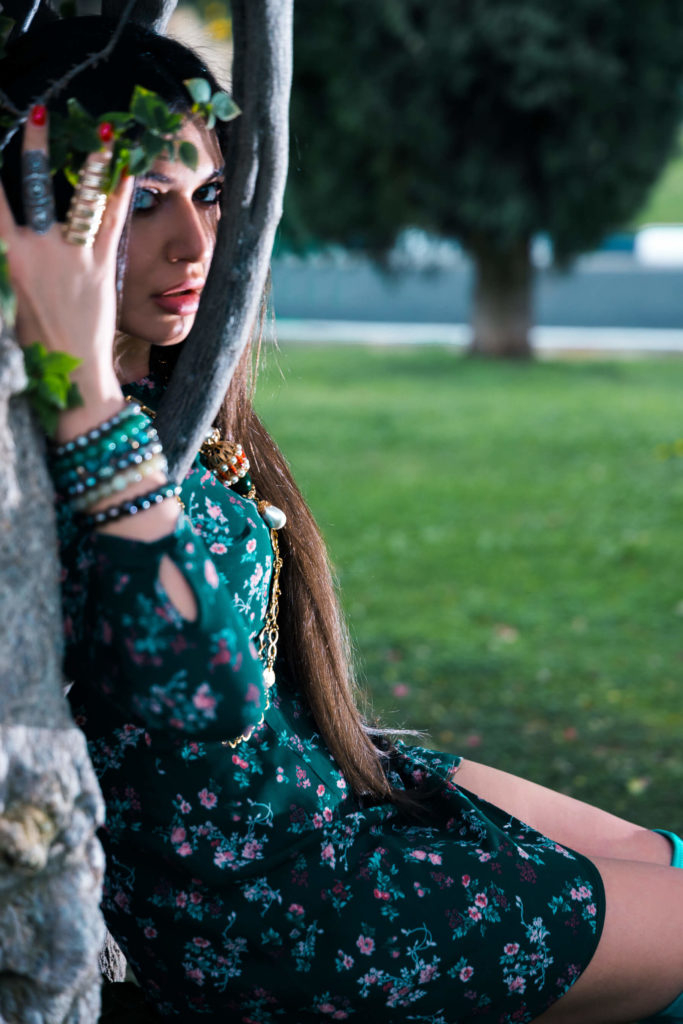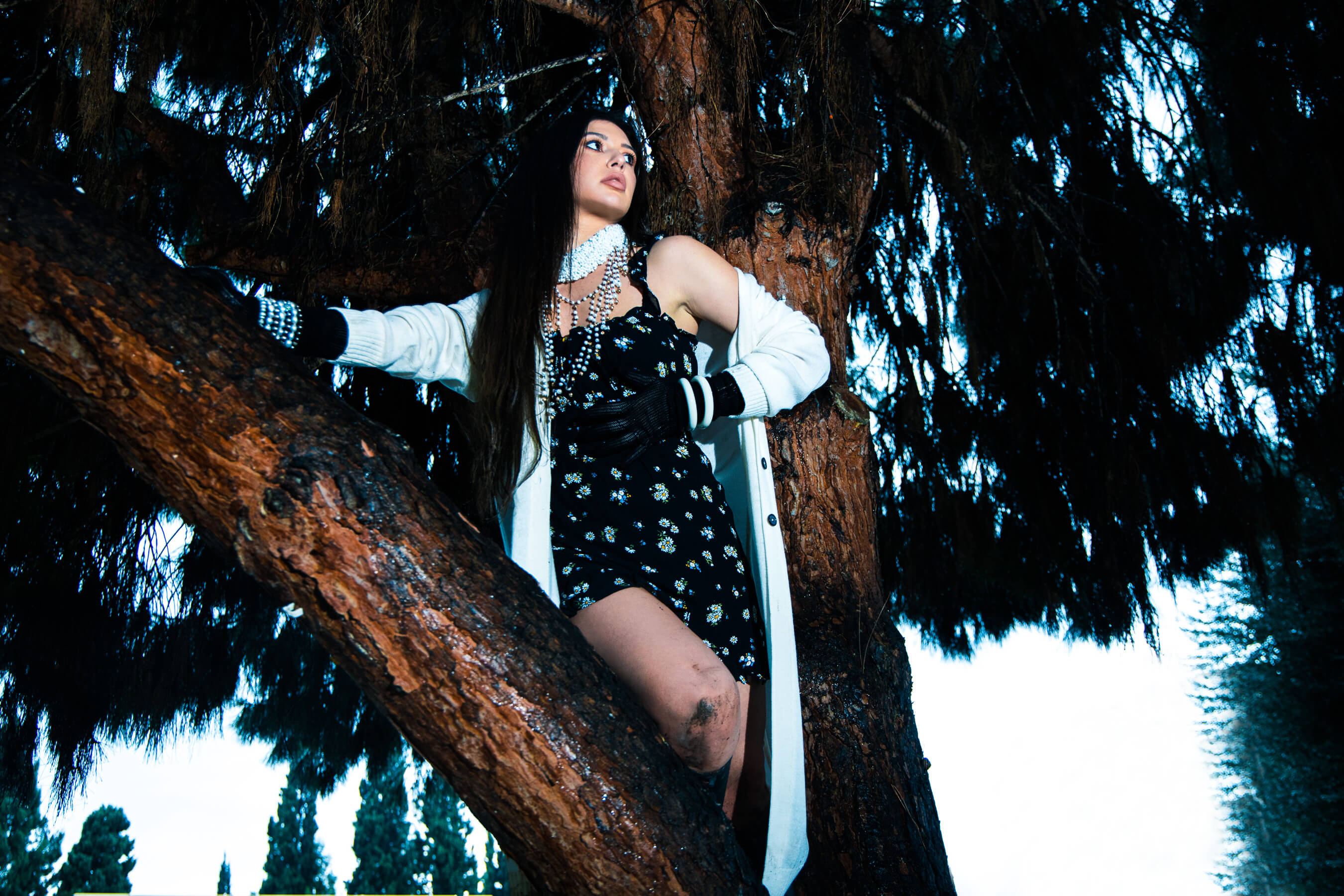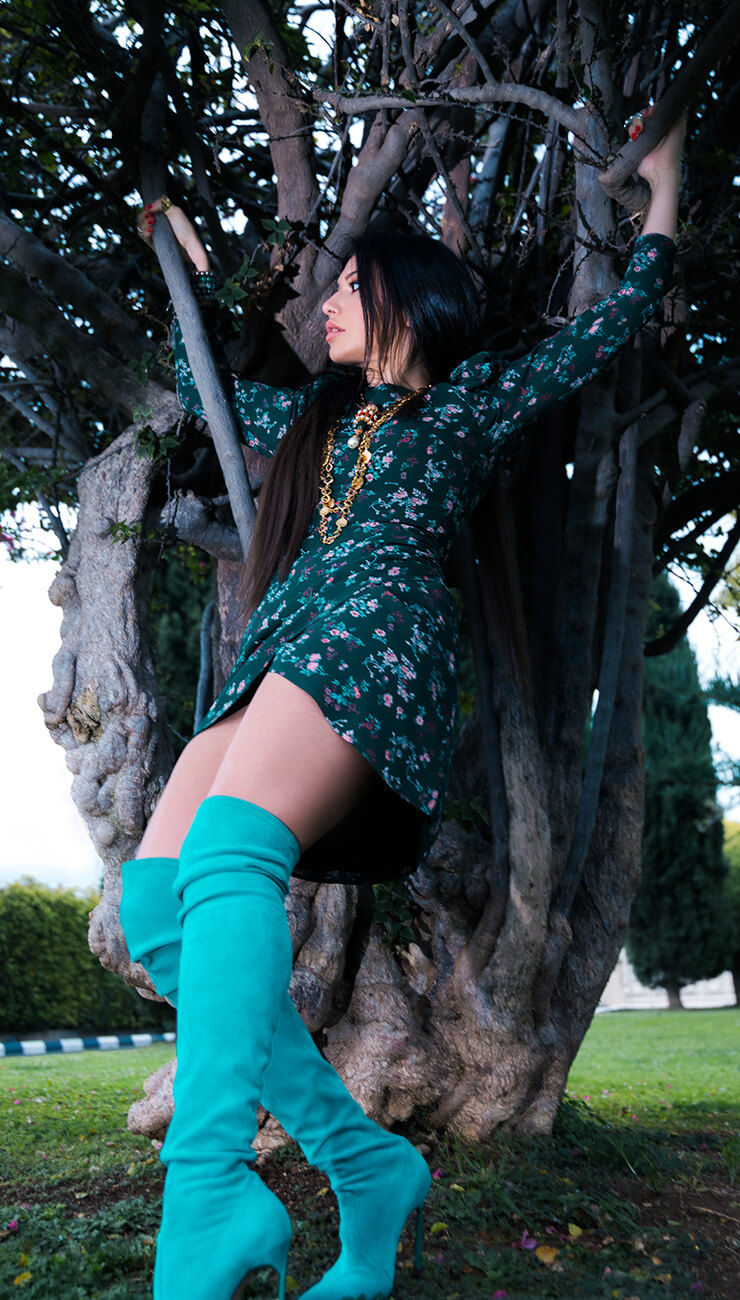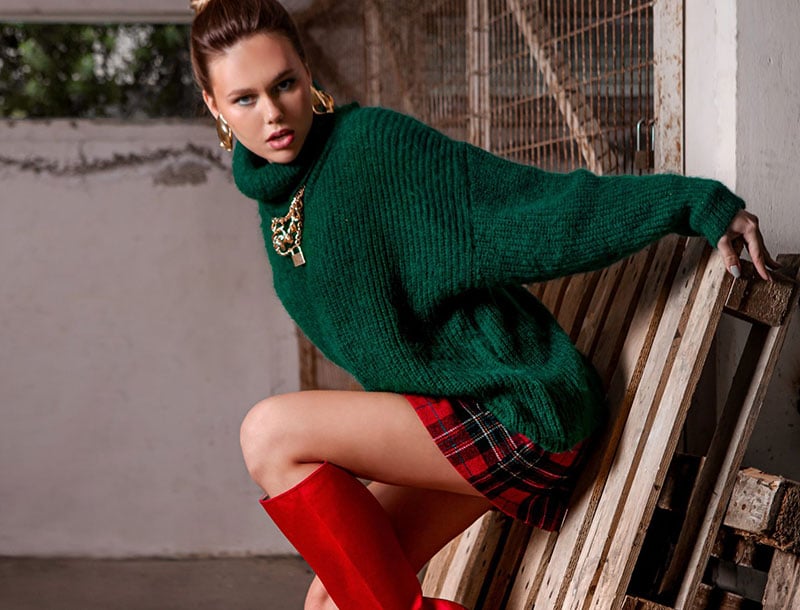Now more than ever florals are in, in, in. Even more than the baggy jeans and hoodies. Floral prints and embroideries have always been popular and have been present in women’s collections for years. But somehow in the recent years, especially 2021 there are entire brands which are identified with florals and botanical motives, some frankly don’t produce other garments. Coincidence, or are brands creating climate change awareness? I believe the desire to create or buy floral dresses come from the subconscious urge to save our planet.
Large scale or small scale, roses or daisies. Florals have made their mark and they will stay a while. Today wearing a floral crepe dress under a thick knit cardigan is exceedingly stylish and gives the outfit instant chic. It is also feminine and playful which is no less important, as that adds comfort in the way one carries the look. Bright floral doll dresses with white collar trims and plackets are the latest ‘thing’ though. It is a mix of village girl meets jet setter and fashionistas everywhere are eating it up. On one hand it’s short and sexy on the other hand the pilgrim style collars, and tiny flower patterns give the dress wearer an instant sense of innocence. Then, there are the regal large florals reserved mainly for coats or embroidered evening dresses, a little less usable in daily wear given the stature of the pieces and higher prices, but no less popular. In fact, breathtaking pieces can be found at big fashion houses like Gucci or Etro. No less popular is the floral ‘granny dress’ which has come around a few times in the last decade but clearly something is keeping it here. Oversized and extremely loose on the body should be carefully styled, if wearing it on its own with the Chloe ‘Susanna’ ankle boots you will resemble a London Regents College student from 2010, which is quite passe, obviously the ever-returning trend can have room in our wardrobes as long as we know how to work it. I would suggest the very cliché but not so overworn cinched waist with a contrasting belt and heels – structured jacket or coat would be a complimentary and unexpected addition to this outfit. Skirts and dresses and even shirts and shorts in floral and botanical motives are common, but where are the floral pants? Wide leg pants, in any of the above-described floral prints would be my go-to, styled with brogues and a fine knit turtle neck top – I hope to see some floral pant suits on the runways in the near future.




Florals regardless of the type of dress or skirt or pant suit will always have a place in our hearts. Florals have always somehow been reflective of spring and with good reason, it’s the time of the year when flowers start to bloom however now it is produced all year round. Coincidence? Barely. In a world where the eco system is barely surviving. Subconsciously I believe that the active use of florals in designer collections has a massive effect on us as a society and the longing to do what little we can to help our environment. Florals being a powerful yet pleasant representative of the eco-system and a gentle reminder of all the ecological issues we face. I truly believe the correlation between politics and art is significant and the florals will stay in our garments for as long as it takes us to act, as climate change is real, and it is happening now.
Deforestation is one of the main causes of climate change, while it is difficult to reverse the effects of CO2 emissions, it is certainly worth a try. After all we don’t want our children to be acquainted with florals and nature through garments alone. No pun intended. The European Union Biodiversity strategy requires the plantation of 3 billion trees in the next 9 years in order to attempt to reduce the effects of green-house gas, CO2 and consumer-based emissions and adapt to climate change. Forest areas need to be increased as 15% of CO2 emissions come from deforestation. Basically, we must reverse the effects caused by the choices of our predecessors. Think of it as cleaning up a mess. If 20-30 years ago forests were cut down in order to build factories, then the successors – in this case us – must now grow these forests in order for our children and grandchildren and following generations to even have a slight chance of a normal life. Deforestation needs to decrease by 75% in the next 10 years. So far between 2010 and 2015 300 million trees per annum have been planted within the EU, the number perhaps seems impressive but in order to even begin to break even with the emissions and reduce the carbon footprint effects we must double those numbers to 600 million trees per year. This year Lifestylepop is going to note the message that the florals in our fashion garments are sending us. Perhaps we cannot fully refrain from practices that are detrimental to the environment just yet, but we must try and reverse the effects by contributing in any way we can. Stay tuned to find out which organizations Lifestylepop will be cooperating with in 2022. Here is a New Year’s resolution for you…
As a luxury commodity consumer. As a luxury lifestyle magazine reader, as a big spender on fashion, beauty, food and travel. How much is the air you breathe worth?





















